7 Lesser-Known Amazing Neighborhoods in Paris
Most Paris itineraries circle around the same spots: the Marais, Saint-Germain, Montmartre. But there’s another side to the city that’s quieter, local, and often more rewarding.
These neighborhoods might not show up on your first search, but they’re full of life, character, and places you’ll remember. Each one is reachable by metro and easy to explore on foot.
1. Butte-aux-Cailles (13ème arrondissement)
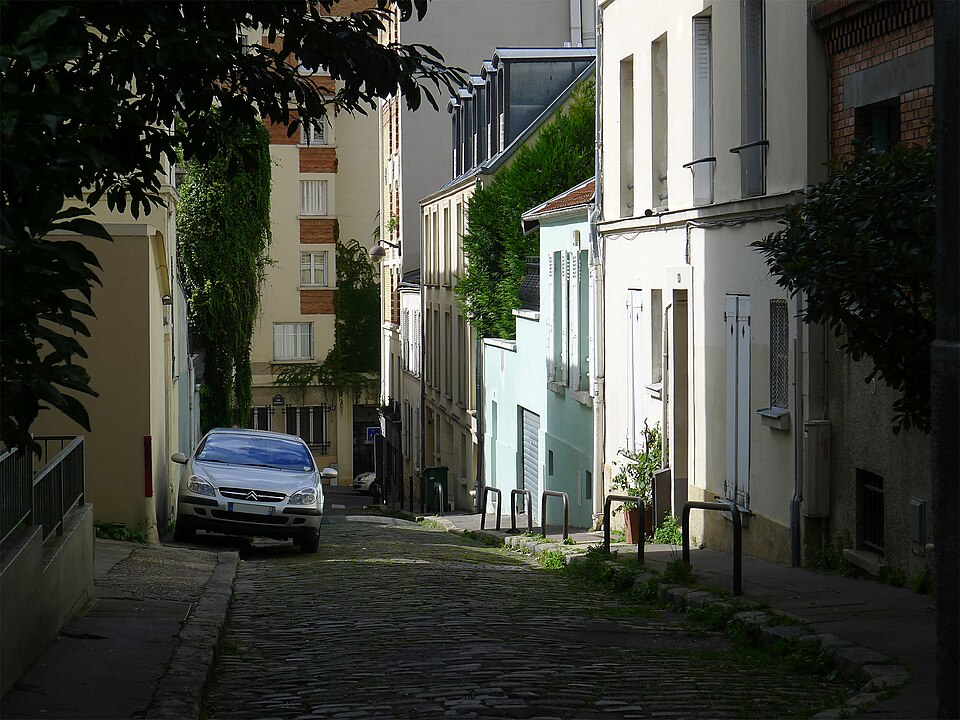
Tucked behind Place d’Italie, Butte-aux-Cailles feels like a small village layered into the city. It’s calm during the day and lively in the evening, especially around Rue de la Butte-aux-Cailles and Rue des Cinq Diamants.
The area is known for its street art, narrow passageways, and independent shops. Passage Boiton and Rue Barrault offer a blend of murals, quirky storefronts, and a handful of casual bars where locals gather.
There’s even a hidden staircase leading up from Corvisart metro station that adds to the neighborhood’s hidden feel.
2. La Campagne à Paris (20ème arrondissement)

This micro-neighborhood in the east of Paris was built as a garden city in the early 1900s. Set on a small hill near Porte de Bagnolet, it’s made up of tiny houses with flower-covered fences and cobbled lanes.
Streets like Rue Irénée Blanc or Rue Jules Siegfried are lined with ivy, and you’ll find almost no cars. It’s residential, peaceful, and surprisingly photogenic.
Locals stroll with groceries, and no-one is trying to sell you anything. You feel like you’ve stepped far out of Paris even though you’re within city limits.
3. Rue Mouzaïa and the Quartier d’Amérique (19ème arrondissement)

Northeast Paris is rarely on tourist maps but this section offers a different kind of city walk. The Mouzaïa district is filled with narrow pedestrian alleys lined with small, one-story homes.
The area was built for workers in the late 1800s and retains a lot of that charm today. It’s especially quiet on weekday mornings.
You can pair a walk there with a visit to Parc des Buttes-Chaumont nearby, one of the city’s most dramatic green spaces, with cliffs, bridges, and long views over the rooftops.
4. Quartier des Peupliers (13ème arrondissement)
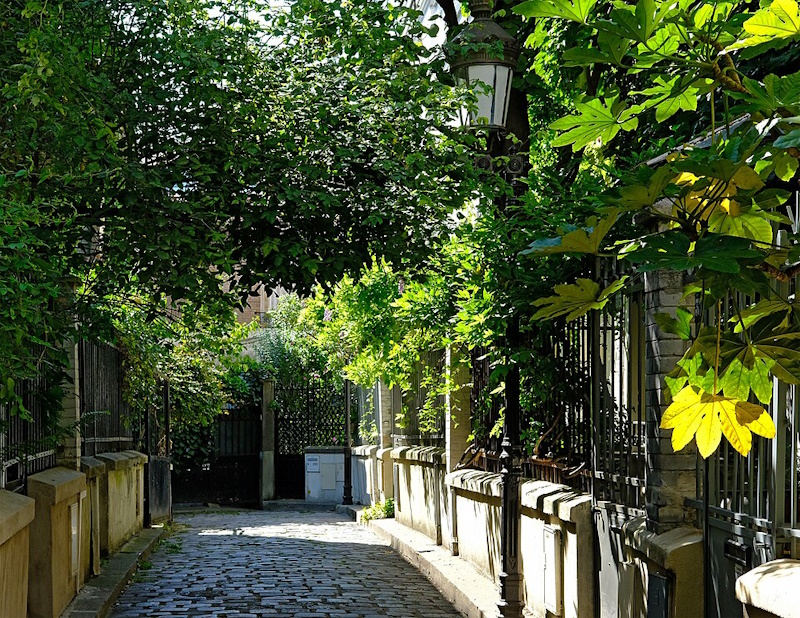
Even locals don’t always know about this pocket behind the Place d’Italie. The Quartier des Peupliers is built around a triangle of tiny residential streets with red-brick houses, gardens, and cats sunning themselves on the window ledges.
It looks more like a countryside suburb than part of a capital city. There are no big sights, no cafés drawing a crowd, just the soft sounds of daily life. It’s ideal for slow walkers, quiet photos, or a break from the bustle.
5. Rue des Martyrs and Nouvelle Athènes (9ème arrondissement)

South of Pigalle and north of the Opera, this section of the 9th is often skipped over, but it’s one of the prettiest.
Rue des Martyrs climbs gently from Notre-Dame-de-Lorette to Montmartre. Along the way are cheese shops, fishmongers, bookstores, and pâtisseries, all still serving their neighborhood.
Nearby, the streets around Place Saint-Georges preserve the atmosphere of the old Nouvelle Athènes district. This was once the heart of artistic and literary life in 19th-century Paris. You can still see touches of that era in the wrought-iron balconies and quiet squares.
6. Oberkampf and Ménilmontant (11ème and 20ème arrondissements)
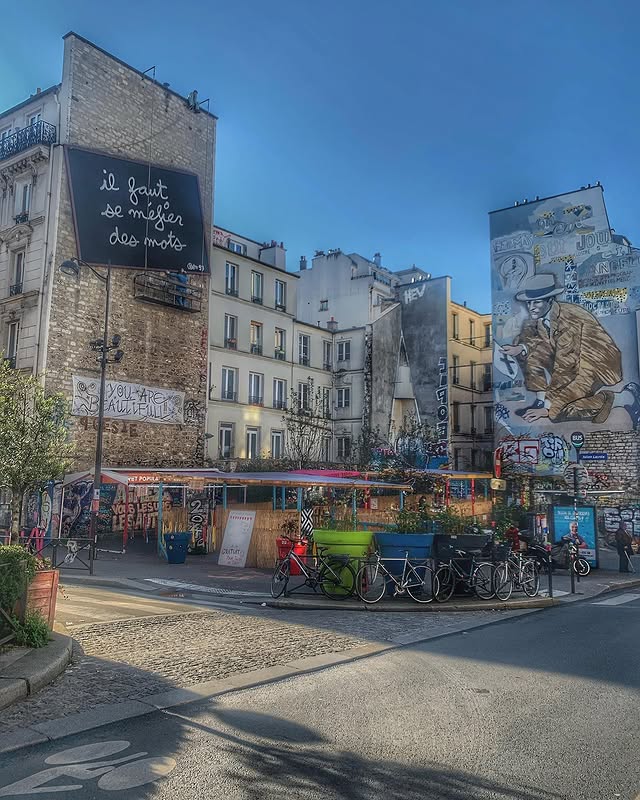
Oberkampf has long been a nightlife hub, but it changes character as you walk northeast into Ménilmontant. This whole strip is gritty, lively, and full of real Paris energy.

There are street art murals, late-night bars, and a mix of cultural venues tucked into old buildings. Walk from Rue Oberkampf toward Rue de Ménilmontant and let yourself wander the side streets.
This is one of the few areas where Parisians still outnumber visitors. You’ll find music spilling from windows, local produce markets, and cafés that don’t care about TripAdvisor.
7. Belleville and the Canal de l’Ourcq
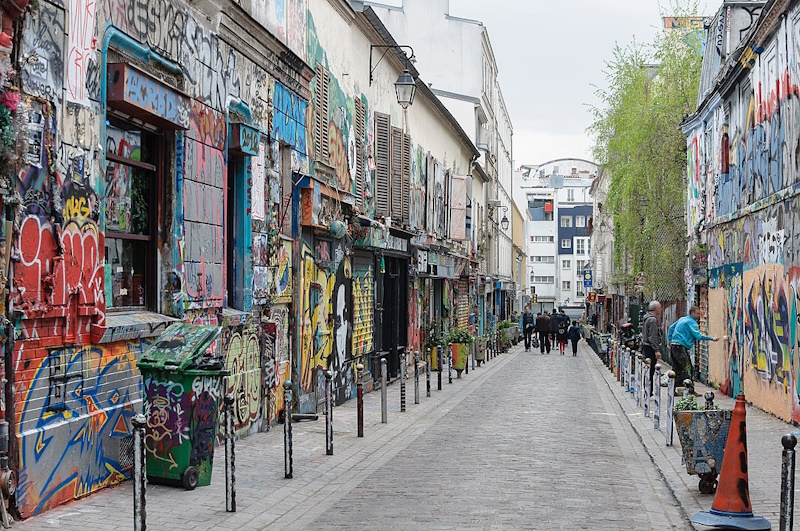
Belleville straddles the 19th and 20th arrondissements, historically home to working-class families and new immigrants. It’s also the birthplace of Edith Piaf.
Walk around Rue Dénoyez for a quick hit of graffiti and color, then head north toward the Parc de Belleville for sweeping views.
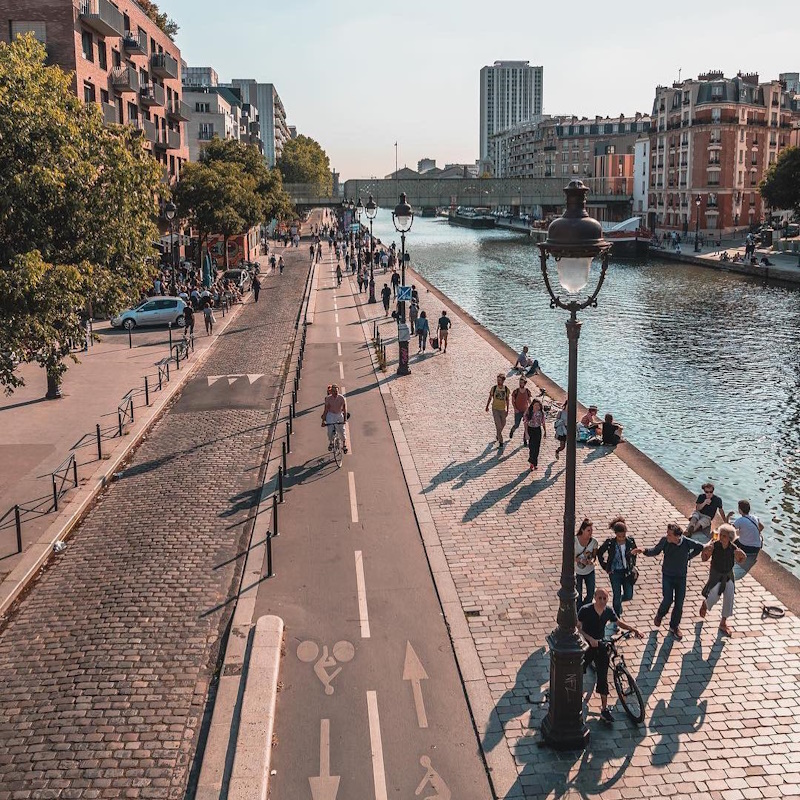
From there, continue toward the Canal de l’Ourcq and the Bassin de la Villette. Locals picnic on the canal steps, play pétanque, or dance to music from a barge.
In the summer, you can rent a small electric boat and cruise past converted warehouses and street musicians.
See this post for more to explore in Belleville.
8. Rue de Lévis and Batignolles (17ème arrondissement)
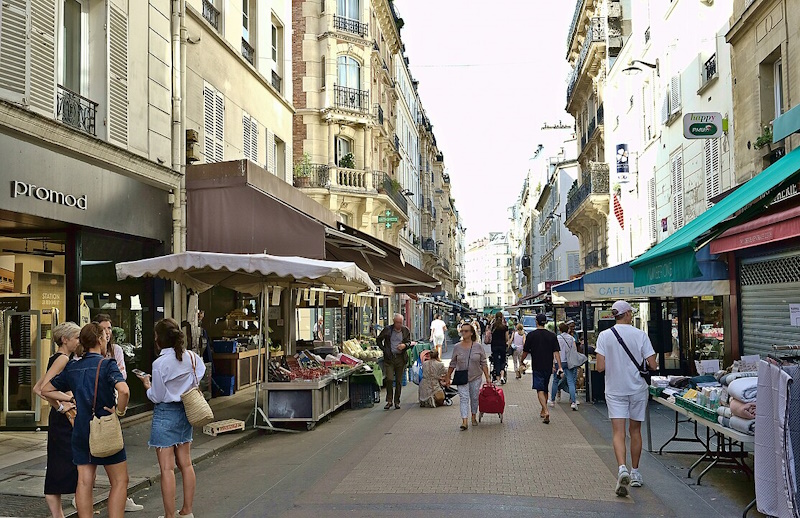
Northwest of Parc Monceau, this pocket of the 17th feels distinctly Parisian but rarely gets a mention in travel guides.
Rue de Lévis is a market street, with butchers, florists, and boulangeries packed shoulder to shoulder. It’s busy, locals stop for produce and linger over small coffees on the sidewalk.
Just west of there, the Batignolles area has a more village-like rhythm. Square des Batignolles is a compact park with winding paths and duck ponds, and the nearby streets are dotted with natural wine bars, family-run bistros, and used bookshops.
9. Passy (16th arrondissement)
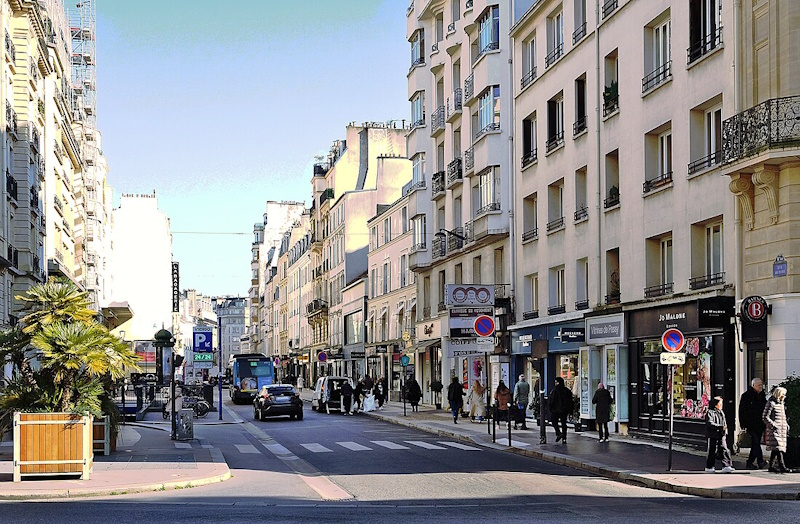
While most people only come to the 16th for the Trocadéro view of the Eiffel Tower, Passy is one of its most livable and human-scaled corners.
The main pedestrianized stretch, Rue de l’Annonciation, has a mix of cafés, food shops, and bakeries where locals do their daily rounds. Not a trendy or gritty neighborhood, it’s calm, tidy, and residential.
Just a short walk away, you’ll find the lesser-known Maison de Balzac (free museum) and one of the quietest Seine-view spots in the city: Square de Rohan.
10. Charonne Village (20ème arrondissement)
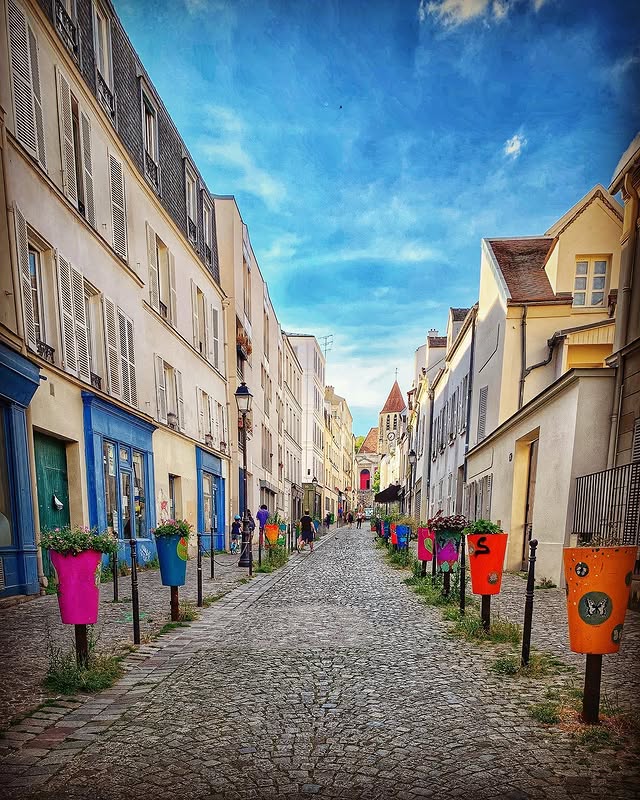
East of Nation, Rue Saint-Blaise cuts through what used to be a rural village absorbed by Paris. The cobbled street is lined with old houses, local cafés, and the stone walls of Église Saint-Germain de Charonne.
You won’t find crowds, just kids heading home from school and neighbors stopping to chat. The area around it, sometimes called Charonne Village, still carries a slower pace.
It’s a good spot to walk without a goal, especially in late afternoon when the light falls low on the stones and terraces start to fill.
